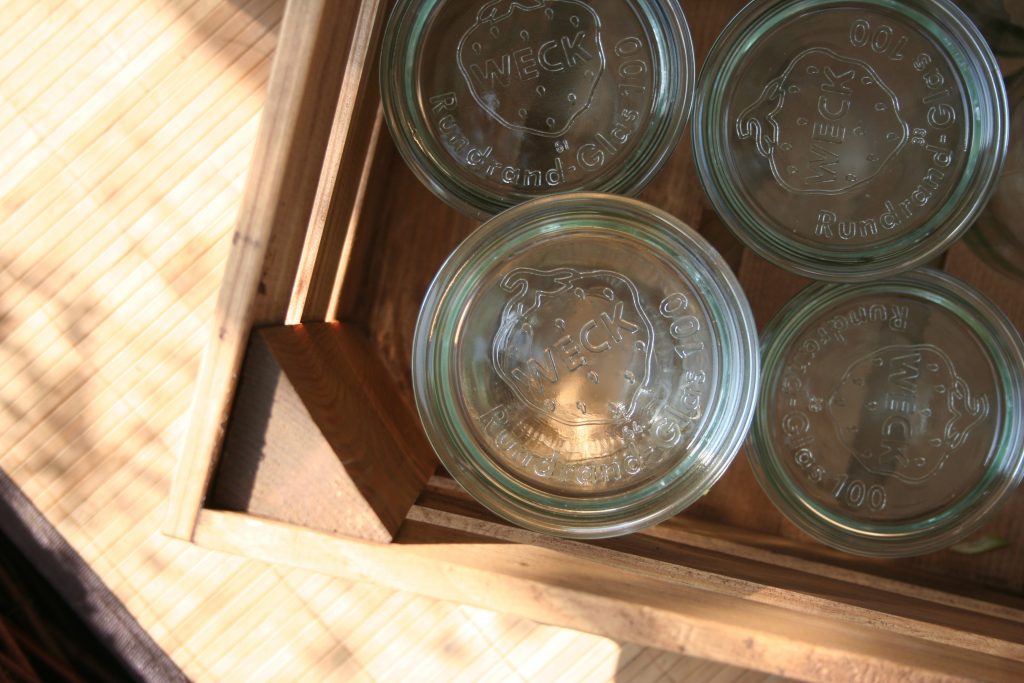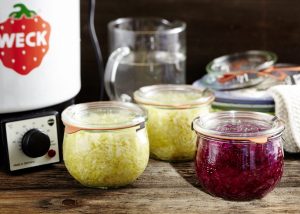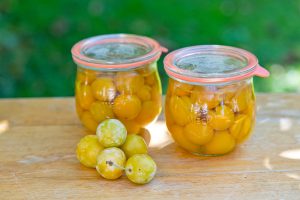
Preserving Jars
Preserving has to be learnt. Especially for vegetables and prepared foods, there is a certain know-how which needs to be observed to ensure success. Jams and jellies are nice delicacies which offer a good introduction to the world of preserving (but even here some basics know-how is neccessary). A first insight into the functionality and basic rules can be found here. Additionally, we recommend the WECK® Home-Canning Book which explains 20 rules for success and contains numerous recipes.
Particularly important are perfectly clean jars and rubber seals, as well as good fresh food. The smallest damage can affect the air-tight seal and the success of the preserving process. The rubber seals cannot be used indefinitely because they cannot be too loose or porous. Hygiene is also very important. Therefore, the jars should be cleaned directly before the preserving process. It is best to leave the jars standing in hot water until just before use. The rubber seals, new or used, must be boiled in vinegar water and rinsed with clear water. Care must be taken not to scald yourself. The jars can also suffer a thermal shock by severe temperature changes (see frequent questions).


It is important that the rim of the jar stays clean during filling. The jar can or must be filled to the brim depending on the food, or a space between the food and glas lid, if necessary. An adjustable rack is required when the jars are put into the pot. The water must flow around the jars. The rack allows the hot water to flow freely so that there is no accumulation of heat at the bottom of the pot. During the preservation process hot water rises to the top and cold water sinks back to the bottom. Important to know: the content of the jar heats up slower than the water. The pot must be filled with enough water so that three quarters of the height of the biggest or top jar is surrounded by water. Jars at the bottom of the pot can be underwater. Caution: At the beginning of the preserving process the water must be the same temperature as the contents of the jar. Once the jars are put on the rack and the pot is filled with water, the lid can be put on and the temperature and time (acc. to recipe) can be set. The jars are heated together with the water. The preserving process only begins when the set temperature has been reached. As steam is released during the preserving process, it is important that there is enough water in the pot, this must checked accordingly.
When the preserving process is finished the jars should be taken out of the pot immediately. Otherwise there might not be enough pressure and the food could become soft and look unappetizing. Meat products could even go off and turn sour. The jars should never be covered with a cloth, exposed to a draft, stood on a cold surface or rinsed with cold water. As the water in the pot is still boiling hot a jar lifter is a valuable kitchen aid. Once the jars have cooled completely the clips can be removed and the lid can be touched in order to find out if the jar is really sealed.

These are only a few important tips and not complete instructions regarding the preserving process.
(Source: www.weck.de, experts of the WECK Home-Canning Book, various WECK Landjournals)
For preserving you ideally have the below hardware at hand:

Preserving Jars

Rubber Seals

Clips

Glass lifter

Cooker

Home-Canning Book